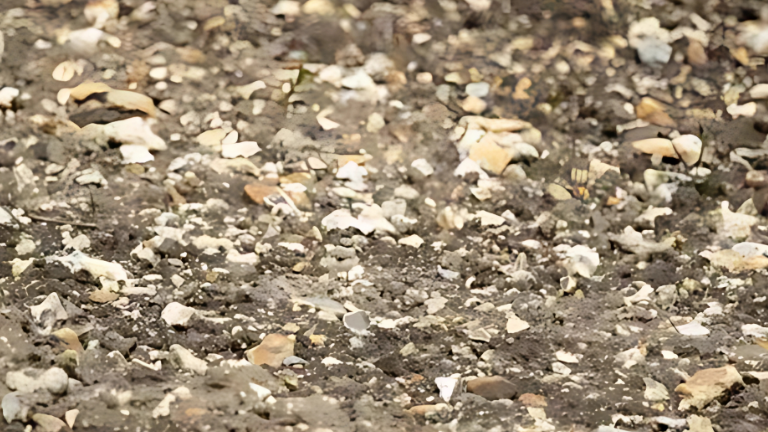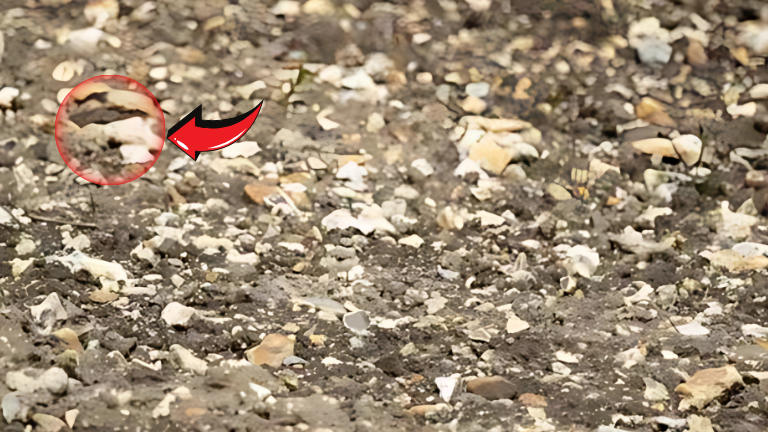The internet has gone absolutely wild over a seemingly simple photograph that’s proving to be one of the most challenging visual puzzles of recent times. This particular optical illusion features what appears to be an ordinary image of sheep, yet hidden within this pastoral scene lies a carefully concealed chick that has left millions scratching their heads in frustration.
What makes this illusion so remarkable isn’t just its difficulty level. The way our brains process visual information creates a fascinating blind spot that allows the chick to remain virtually invisible to most viewers, even when they know exactly what they’re searching for.
Understanding the Science Behind This Mind-Bending Illusion
How Our Visual System Processes Complex Images
The human brain has evolved to recognize patterns and group similar objects together. When we look at an image containing multiple sheep, our visual processing system automatically categorizes everything white and fluffy as part of the flock. This natural tendency creates what scientists call “change blindness” – our inability to detect obvious changes in our visual field.
Our eyes don’t actually see everything in front of us with equal clarity. Instead, they focus on specific areas while our brain fills in the gaps based on previous experiences and expectations. This remarkable efficiency usually serves us well, but it also creates opportunities for clever illusions to fool our perception completely.

The Role of Pattern Recognition in Visual Deception
Pattern recognition represents one of humanity’s most fundamental cognitive abilities. We’ve survived as a species partly because we can quickly identify threats, food sources, and familiar faces in complex environments. However, this same system that keeps us safe also makes us vulnerable to visual tricks.
The sheep illusion exploits our brain’s tendency to see what it expects to see. When presented with a group of similar-looking animals, our pattern recognition system works overtime to maintain consistency, effectively hiding anything that doesn’t fit the established pattern.
Why This Particular Illusion Has Captured Global Attention
The Perfect Storm of Visual Confusion
Several factors combine to make this chick-finding challenge exceptionally difficult. The positioning of the hidden birdwithin the sheep’s body creates perfect camouflage, while the similar coloring and texture make detection nearly impossible without focused attention. Social media has amplified the puzzle’s reach, with frustrated users sharing their unsuccessful attempts across platforms.
The psychological satisfaction of finally spotting the chick creates a powerful reward response. This feeling of accomplishment encourages people to share the challenge with friends and family, creating a viral feedback loop that has propelled the illusion to international fame.
The Social Media Phenomenon
Platforms like Facebook, Twitter, and TikTok have become breeding grounds for optical illusion challenges. Users love testing their friends’ visual skills while simultaneously proving their own superior perception abilities. The competitive element adds an extra layer of engagement that traditional puzzles simply cannot match.
Content creators have discovered that optical illusions generate massive engagement rates. Comments sections fill with frustrated users demanding answers, while successful solvers proudly announce their achievements and offer hints to struggling viewers.
Strategies for Successfully Finding the Hidden Chick
Effective Visual Search Techniques
Professional investigators and security personnel use systematic scanning methods that ordinary people can adapt for puzzle-solving purposes. Instead of randomly searching the entire image, try dividing it into sections and examining each area methodically. Start from one corner and work your way across in a grid pattern.
The key lies in changing your focus technique. Rather than staring intently at specific details, try relaxing your gaze and allowing your peripheral vision to work. Sometimes the chick becomes visible when you’re not looking directly at it.
Understanding Visual Focal Points
Most people instinctively focus on the center of images, but clever puzzle designers often place hidden elements in unexpected locations. The edges and corners of photographs frequently contain surprises that central viewing patterns miss entirely. Train yourself to explore these often-overlooked areas first.
Adjusting your viewing distance can also reveal hidden elements. Try holding your device at different distances or viewing the image on various screen sizes. Sometimes the illusion only works effectively at specific viewing scales.
The Psychology Behind Our Collective Fascination
Why We Love Being Fooled
Humans possess a paradoxical relationship with deception when it comes to entertainment. We simultaneously enjoy being tricked and pride ourselves on our ability to solve complex puzzles. Optical illusions provide a safe space where being fooled feels fun rather than threatening.
The temporary confusion followed by sudden clarity creates a powerful emotional experience. This psychological reward system explains why people spend hours working on a single puzzle and feel compelled to share their discoveries with others.
The Competitive Element of Visual Challenges
Social comparison drives much of our engagement with viral visual puzzles. Posting success screenshots or offering hints allows people to demonstrate their superior observation skills to their social networks. This competitive aspect transforms simple entertainment into social currency.
Failed attempts create community bonding as frustrated users commiserate in comment sections. Shared struggle often proves more engaging than individual success, fostering connections between strangers who face the same visual challenge.
Similar Optical Illusions That Have Broken the Internet
The Evolution of Viral Visual Puzzles
Before the hidden chick challenge, the internet obsessed over dress color debates and spinning dancer directions. Each viral illusion builds upon previous successes while introducing new elements that capture public imagination. Understanding this evolution helps explain why certain puzzles achieve global recognition while others fade quickly.
Modern illusion creators study successful predecessors to identify elements that generate maximum engagement. The combination of moderate difficulty, clear success criteria, and social sharing potential creates the perfect recipe for viral content.
What Makes Some Illusions More Successful Than Others
Successful viral illusions share several key characteristics: they must be challenging enough to frustrate viewers initially but solvable enough to provide eventual satisfaction. The solution should feel obvious in retrospect while remaining hidden during initial viewing attempts.
Timing and presentation also play crucial roles in an illusion’s success. Content that appears during slow news periods or aligns with existing social media trends gains momentum more easily than perfectly crafted puzzles released at unfortunate moments.

The Hidden Chick Solution and Location Tips
Where to Look for the Concealed Bird
Expert puzzle solvers recommend focusing your attention on the right side of the image where the chick blends seamlessly with one sheep’s body contours. The bird’s positioning creates perfect camouflage that exploits our brain’s tendency to see unified shapes rather than separate elements.
Look for subtle color variations and unusual texture patterns that don’t quite match the surrounding sheep wool. The chick’s features become more apparent when you train your eyes to notice inconsistencies rather than seeking obvious bird shapes.
Visual Cues That Reveal the Answer
Successful finders often report noticing the chick’s distinctive eye or beak before seeing the complete bird outline. These small details stand out once you know where to look but remain invisible during casual viewing. Train yourself to spot these telltale features.
Contrast differences between the chick and sheep provide another valuable clue. While both animals appear light-colored, subtle shading variations create boundaries that careful observers can detect with focused attention.
Frequently Asked Questions
Q: Why can 99% of people not find the chick? A: Our brains automatically group similar objects together, making the chick blend invisibly with the sheep’s body.
Q: Is there really a chick in the image? A: Yes, there is definitely a real chick hidden among the sheep, positioned on the right side of the photograph.
Q: What techniques help find hidden objects in illusions? A: Try systematic scanning, adjusting viewing distance, and looking for texture or color inconsistencies.
Q: Are optical illusions harmful to your eyes? A: No, optical illusions are completely safe and may actually help improve your visual processing skills.
Q: Why do some people see illusions while others don’t? A: Individual differences in visual processing, attention patterns, and past experiences affect illusion perception.
Q: How long should I spend looking for the chick? A: Most successful finders spot it within 30 seconds to 2 minutes of focused searching.
Q: Can children find the chick more easily than adults? A: Children sometimes succeed faster because they approach visual puzzles with fewer preconceived expectations.
Q: Does screen size affect the illusion’s difficulty? A: Yes, larger screens often make hidden elements easier to spot due to increased detail visibility.
Q: Why do optical illusions become viral on social media? A: They create perfect shareable content that combines challenge, entertainment, and social comparison elements.
Q: Are there other animals hidden in sheep illusion images? A: This specific viral image contains only one hidden chick, though similar puzzles may include multiple hidden elements.